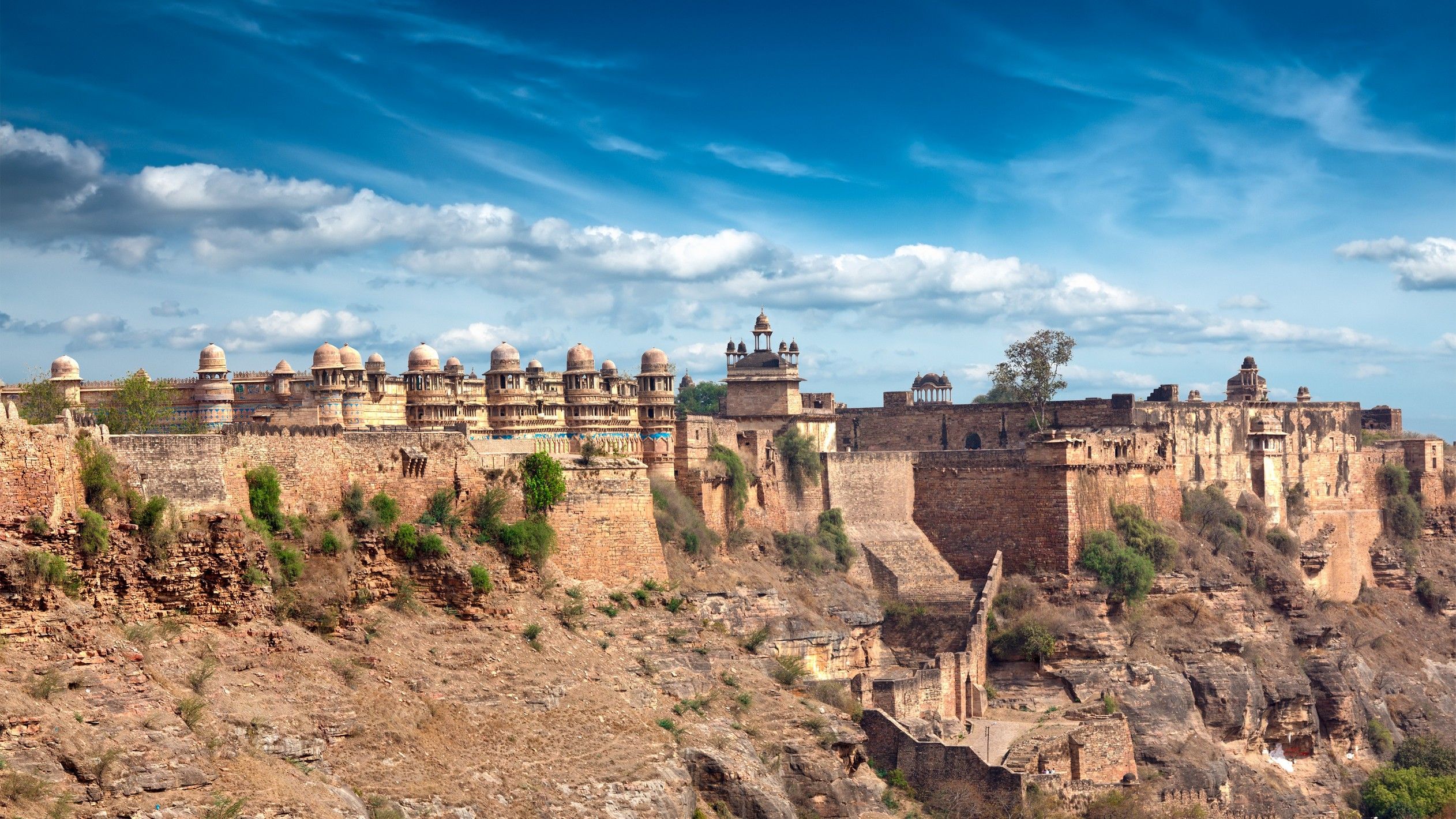
steiners-incredible-india-2024
vakantio.de/steiners-incredible-india-2024
BLOG 14: Jodhpur - Highlight in Rajasthan (Part 1: Festung & Cenotaph)
Imechapishwa: 16.03.2024
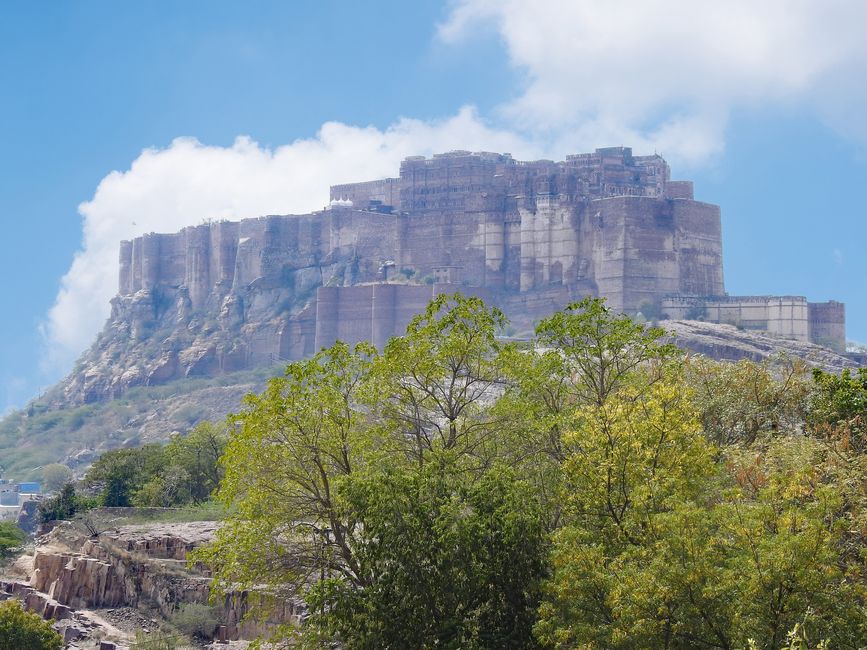
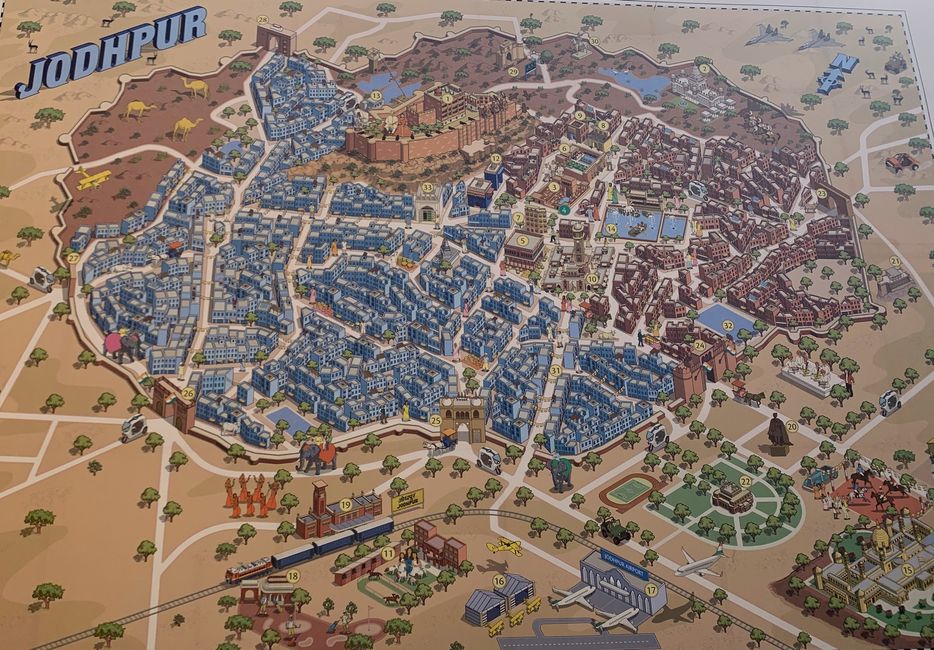
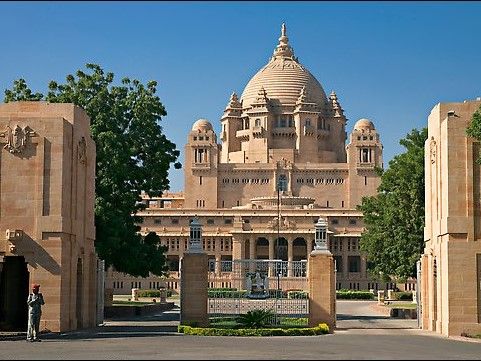

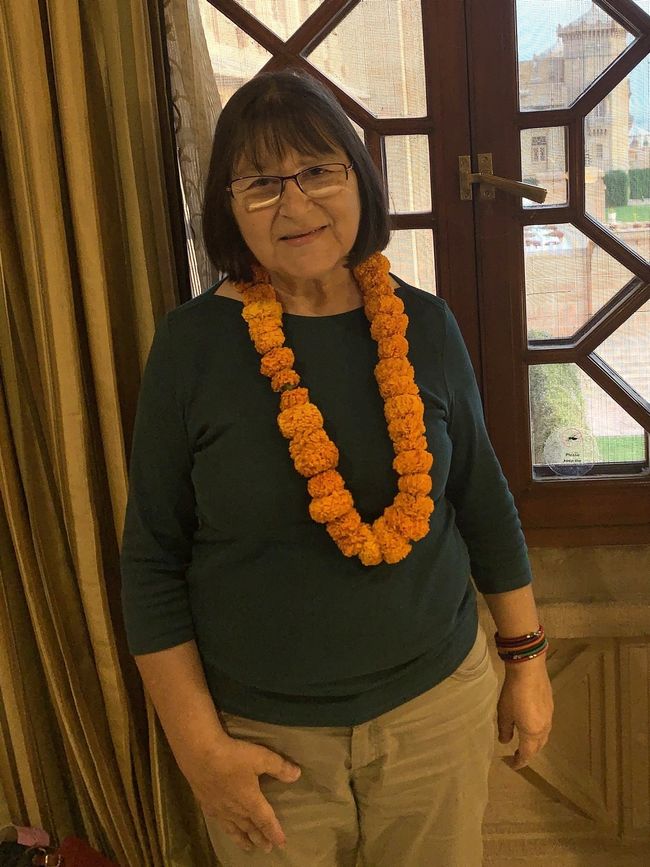
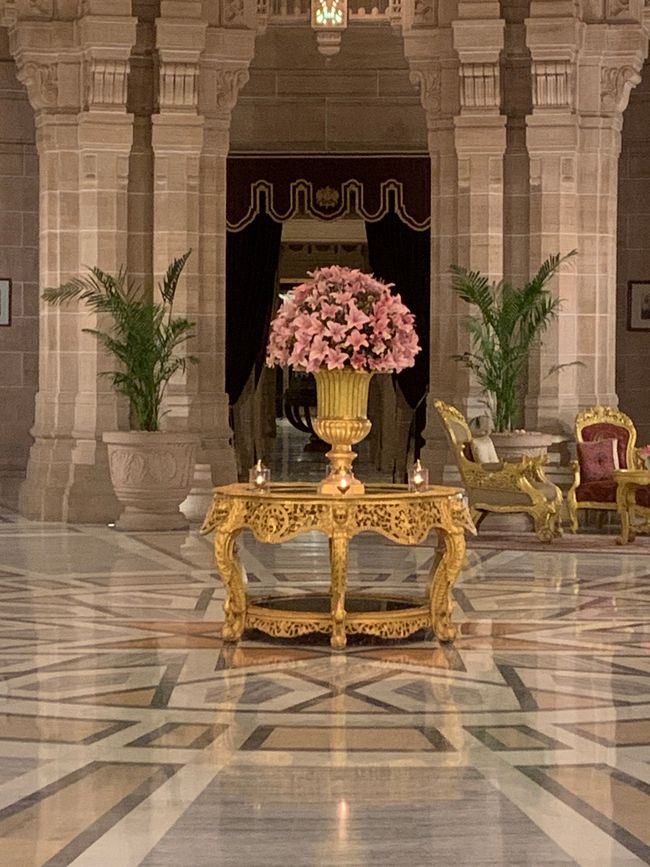

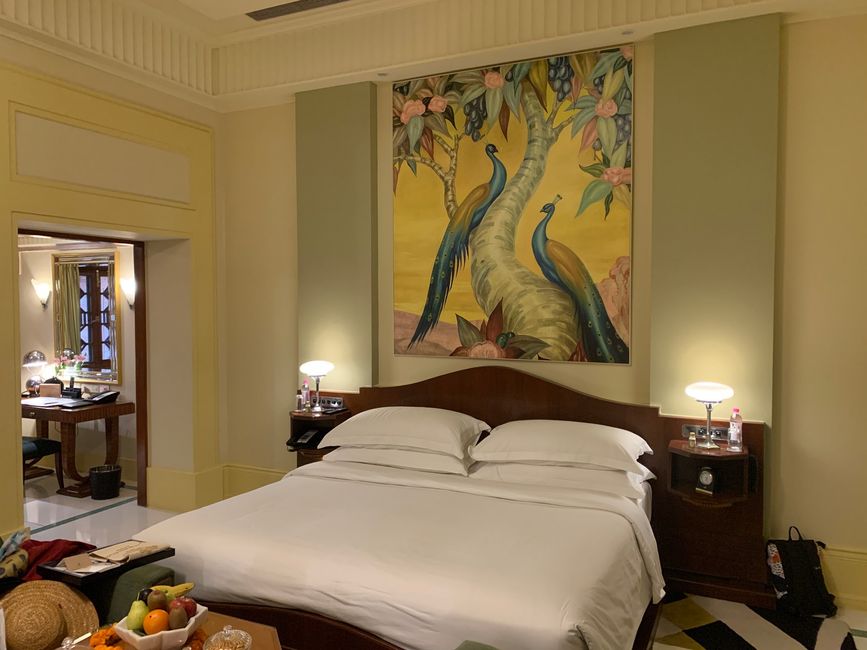
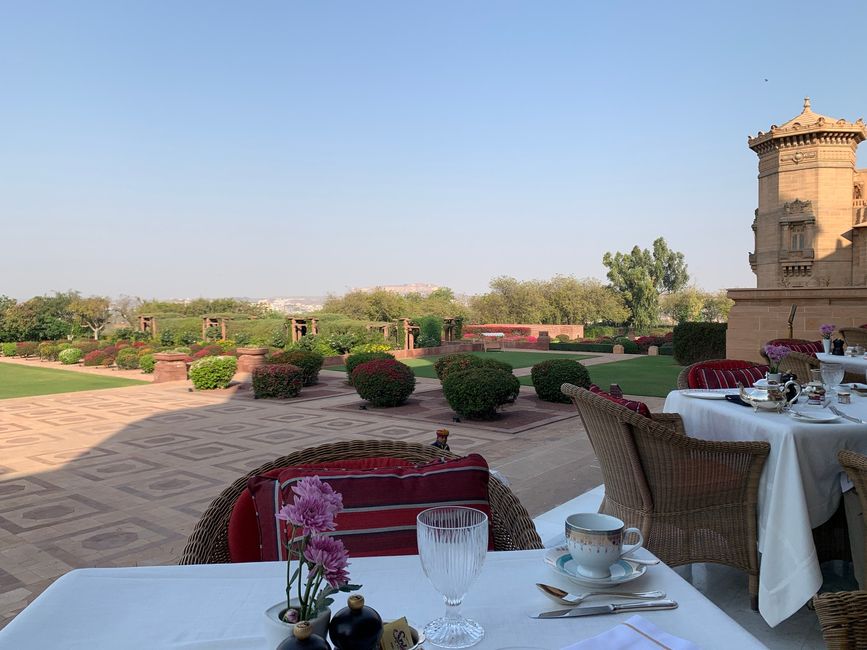
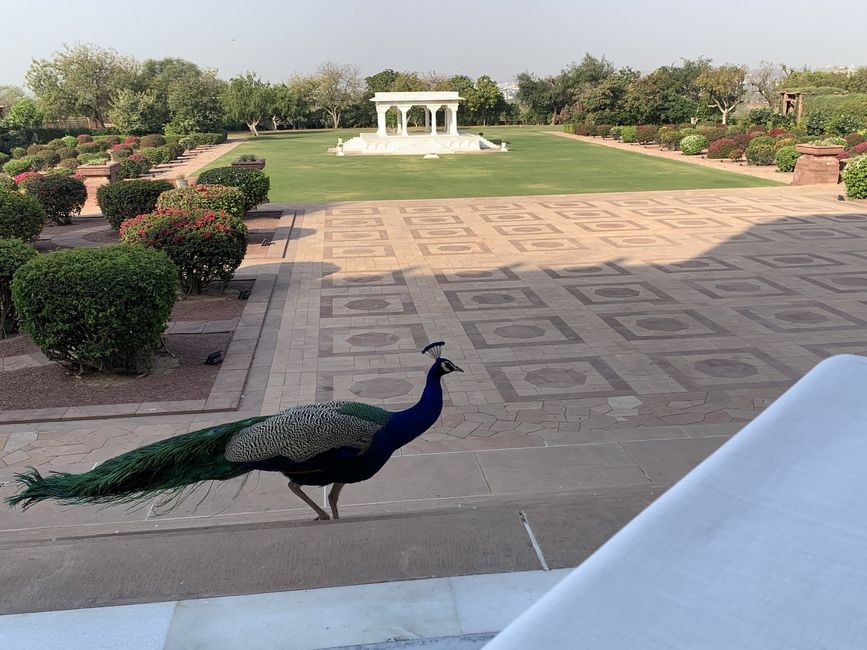

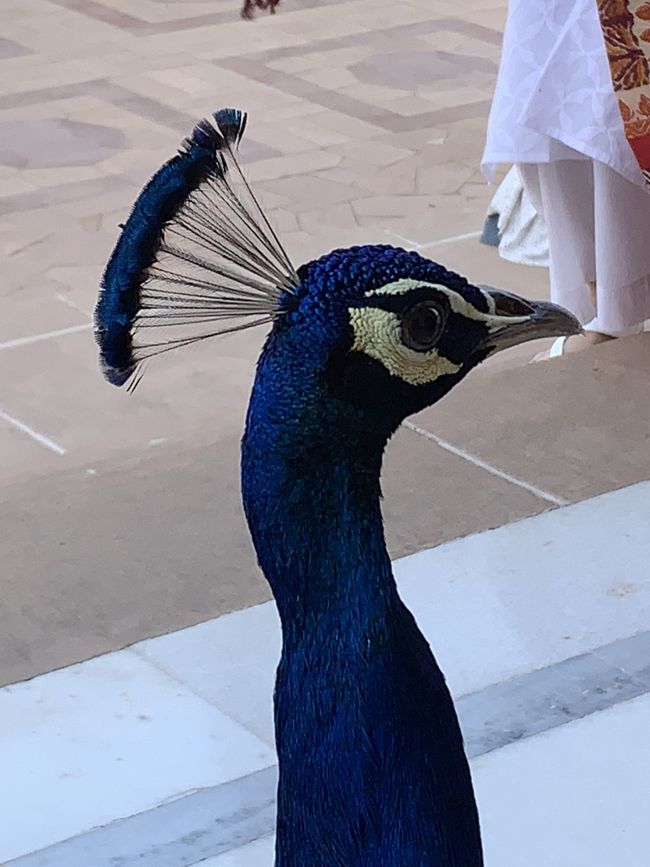
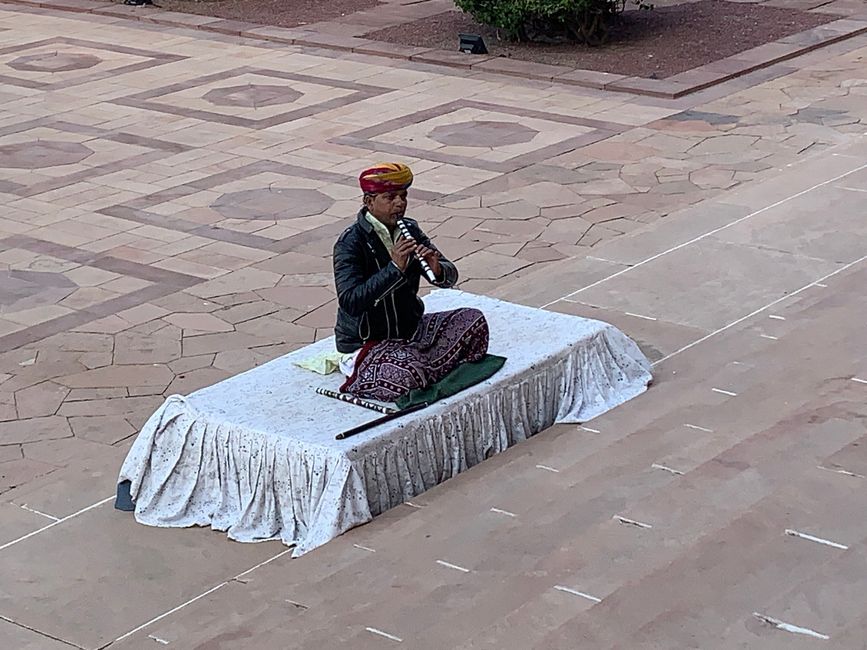
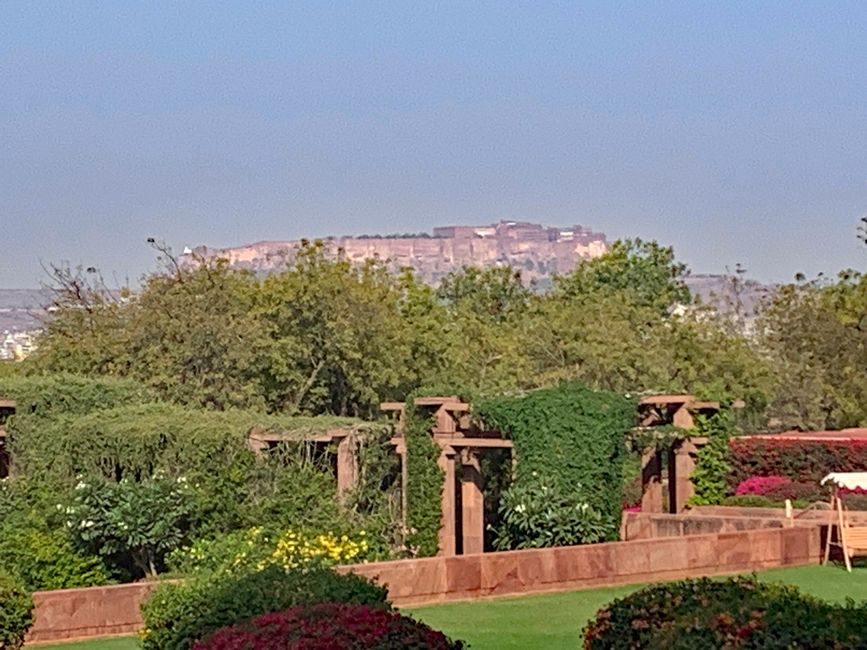
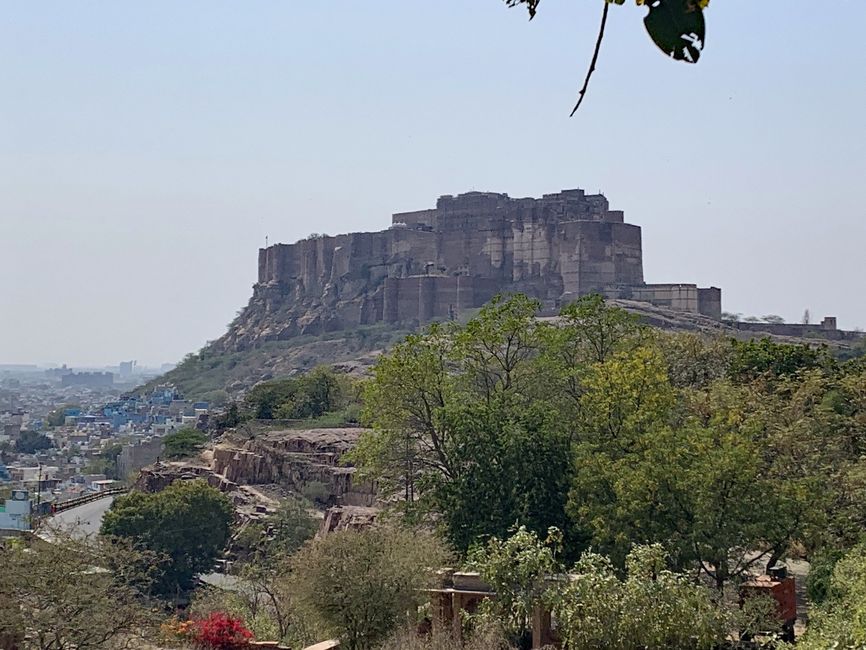
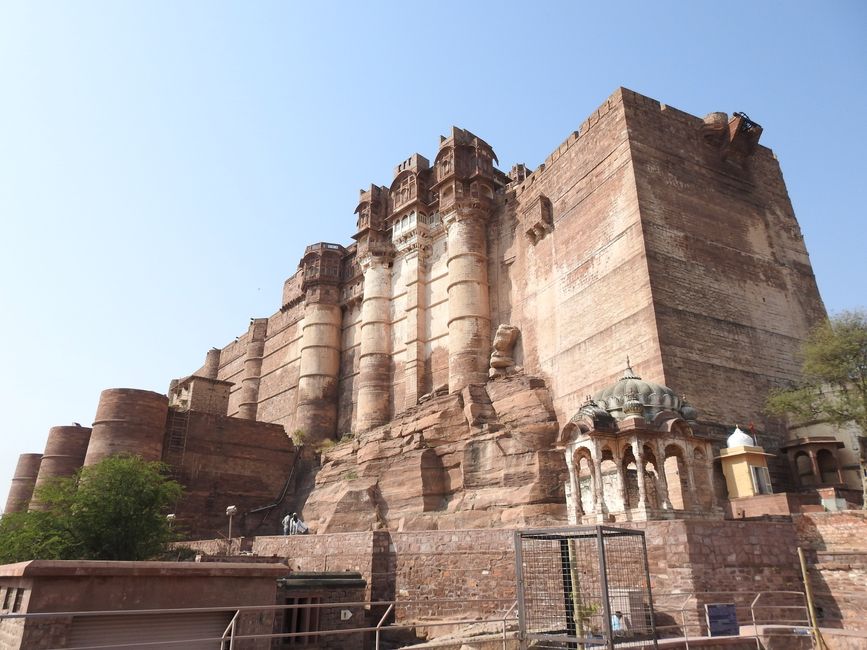
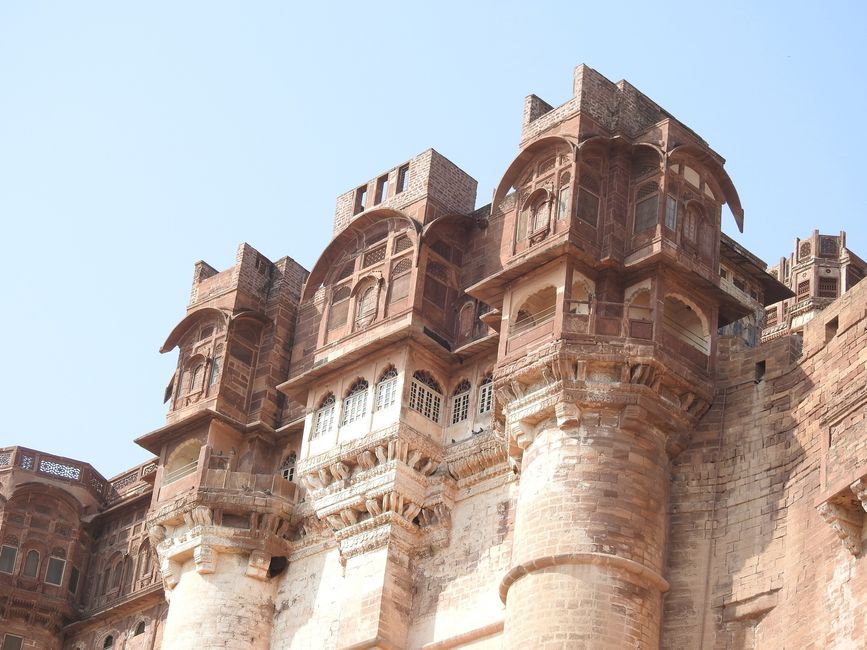


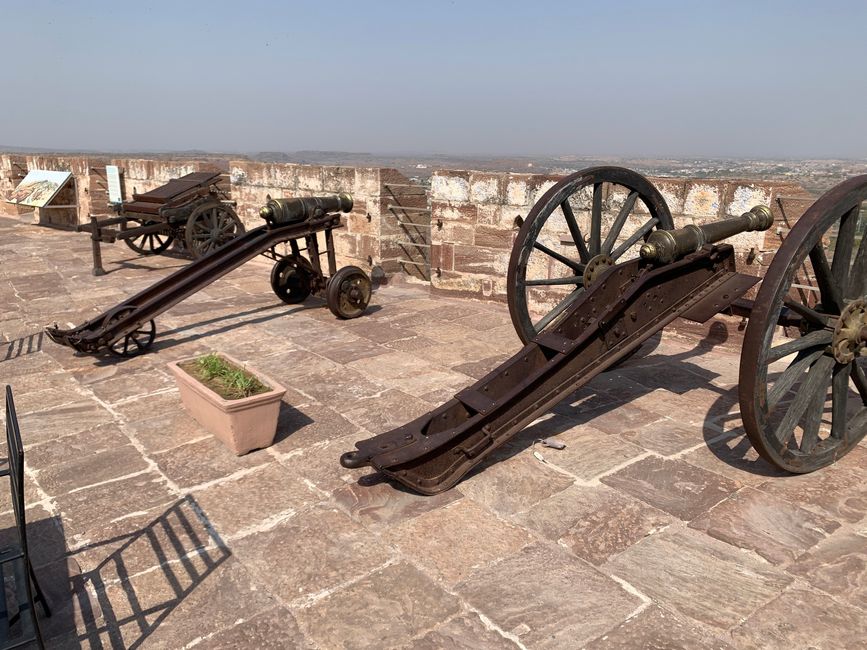
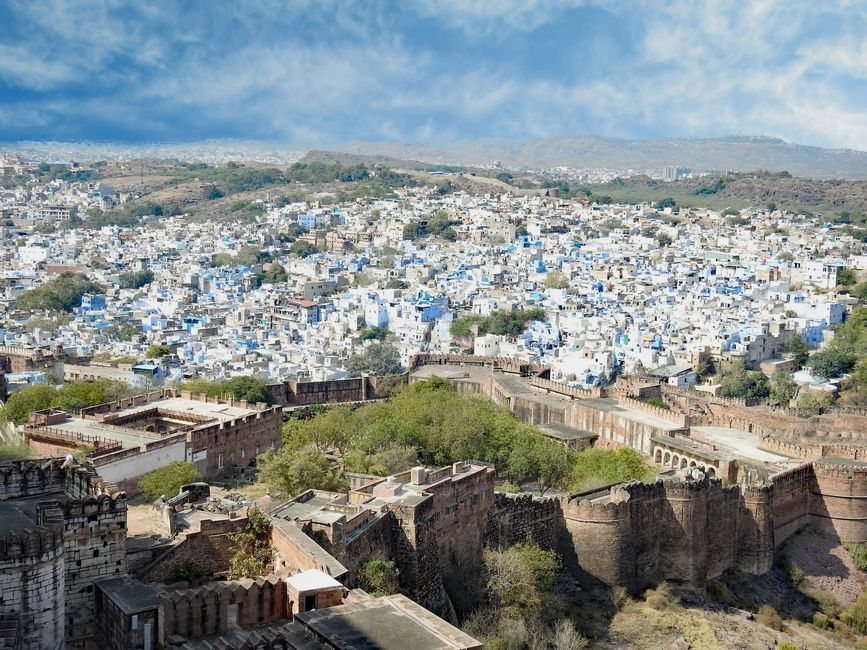
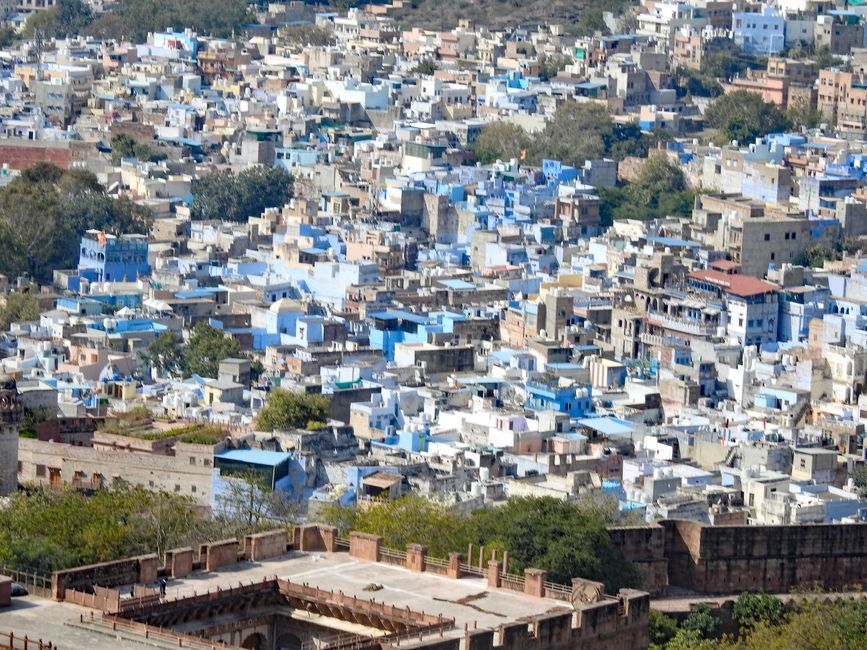
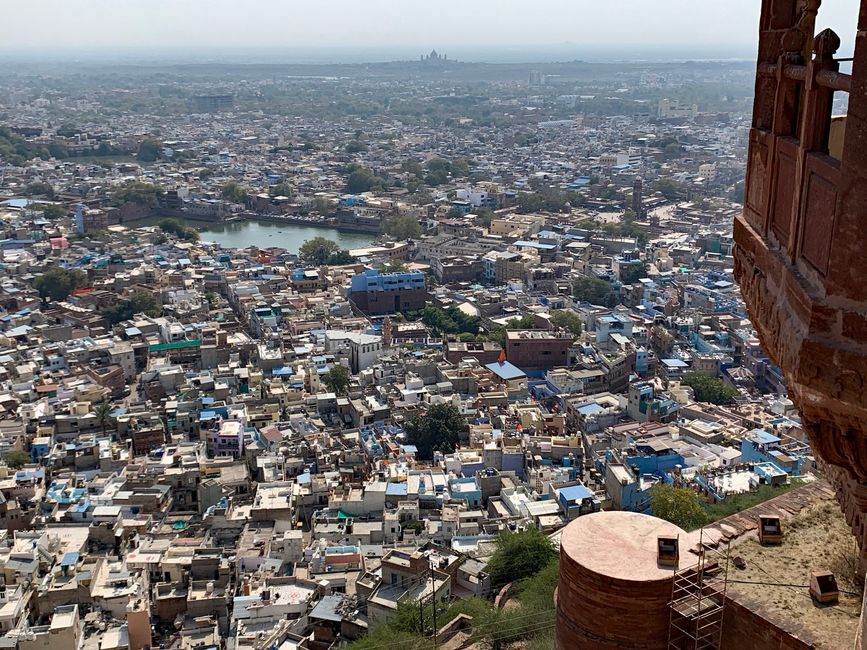
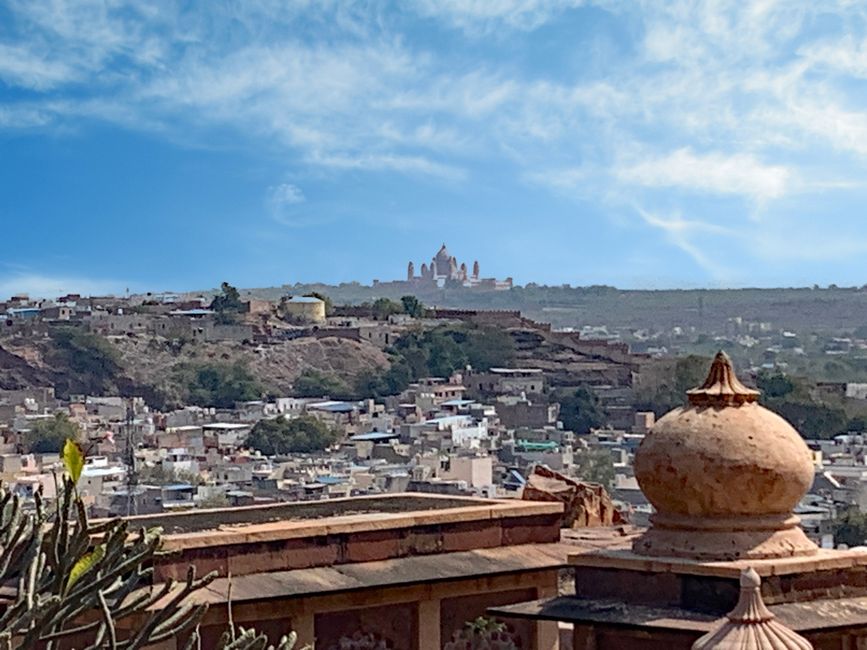
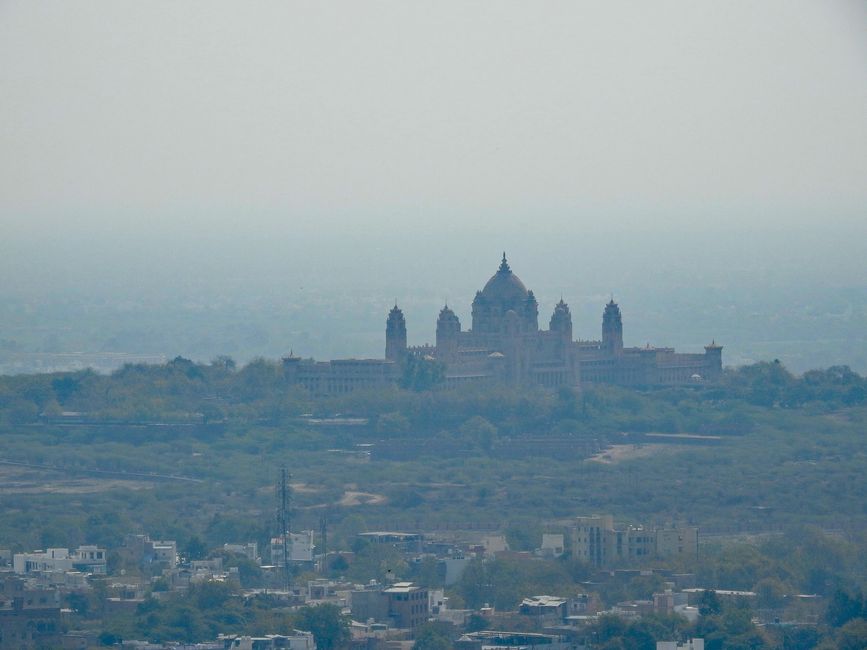
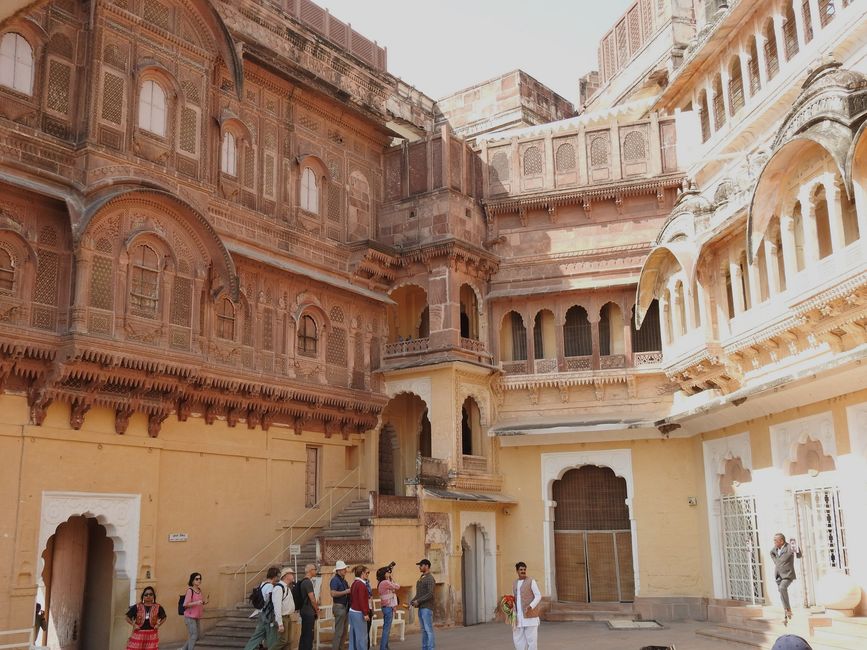
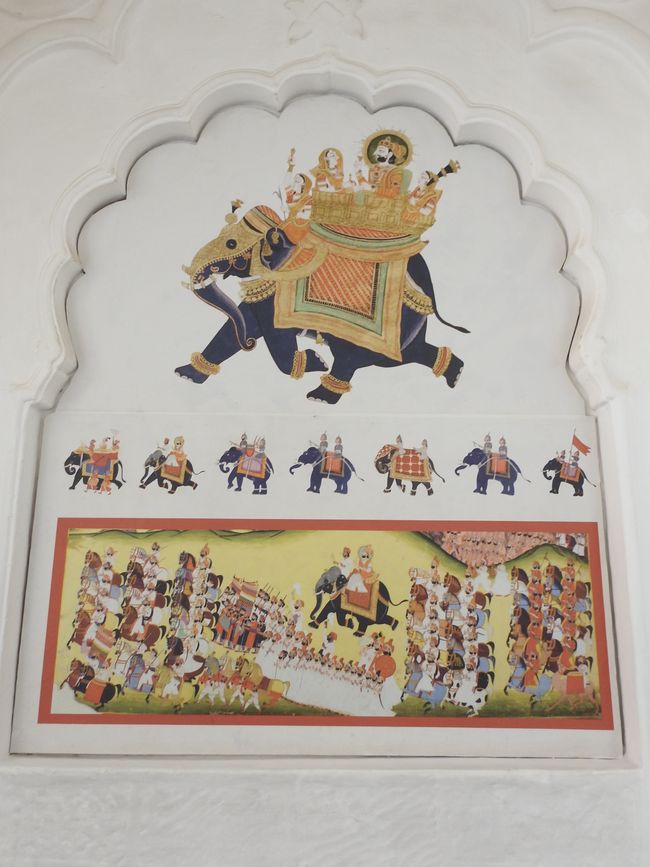
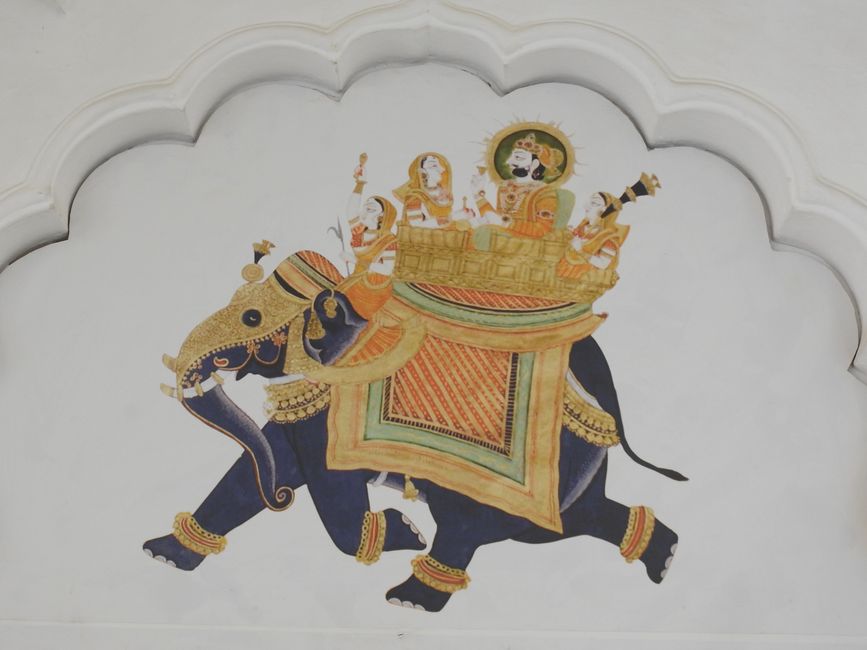
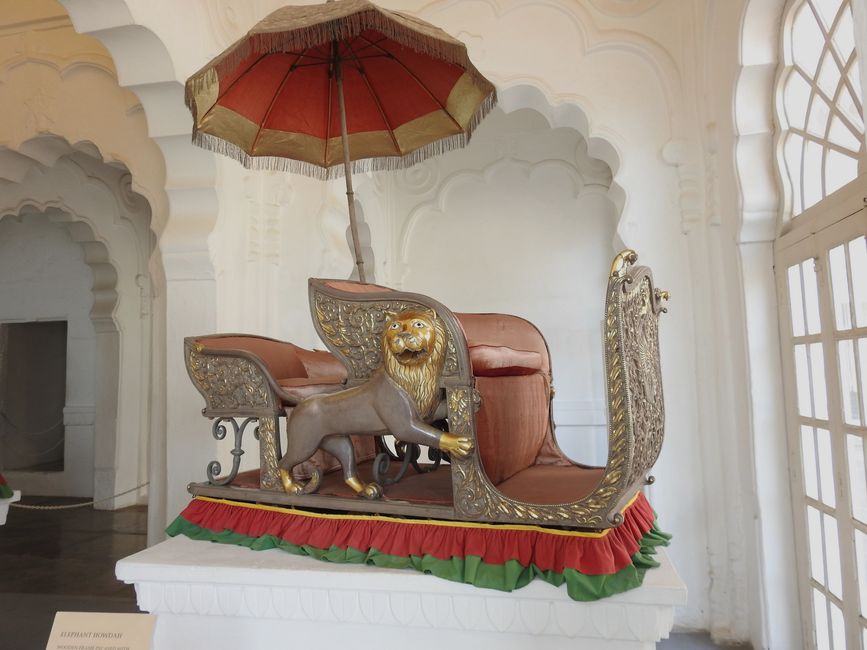
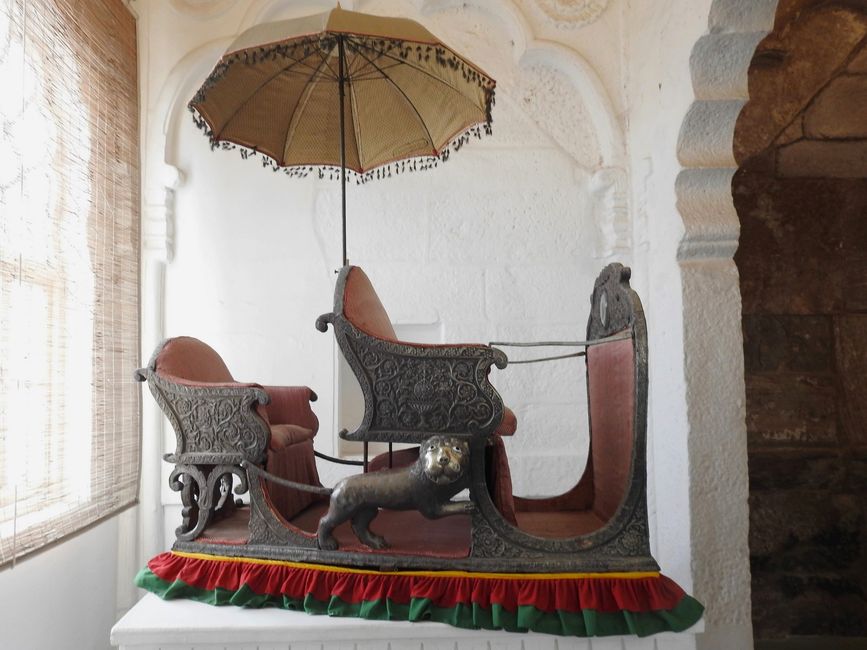

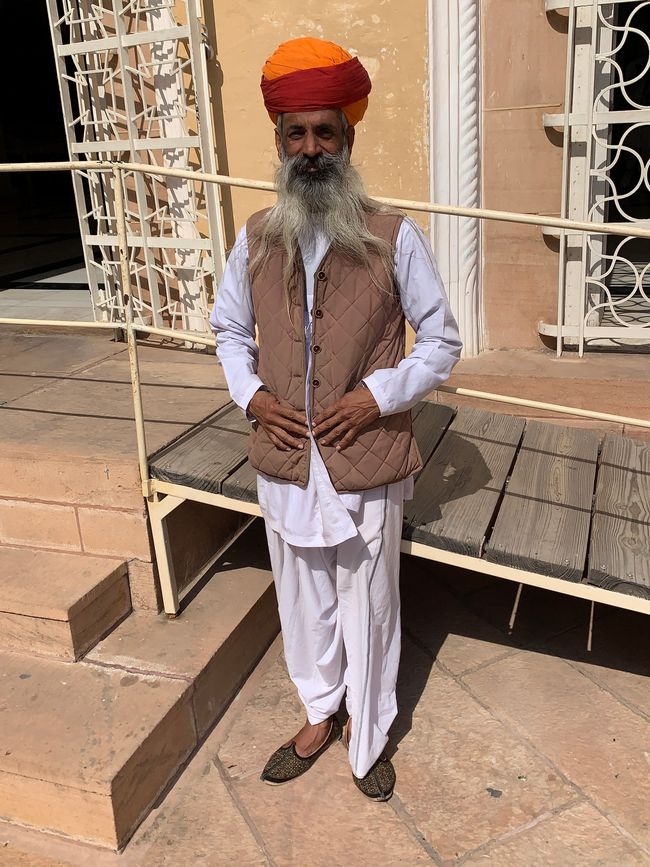
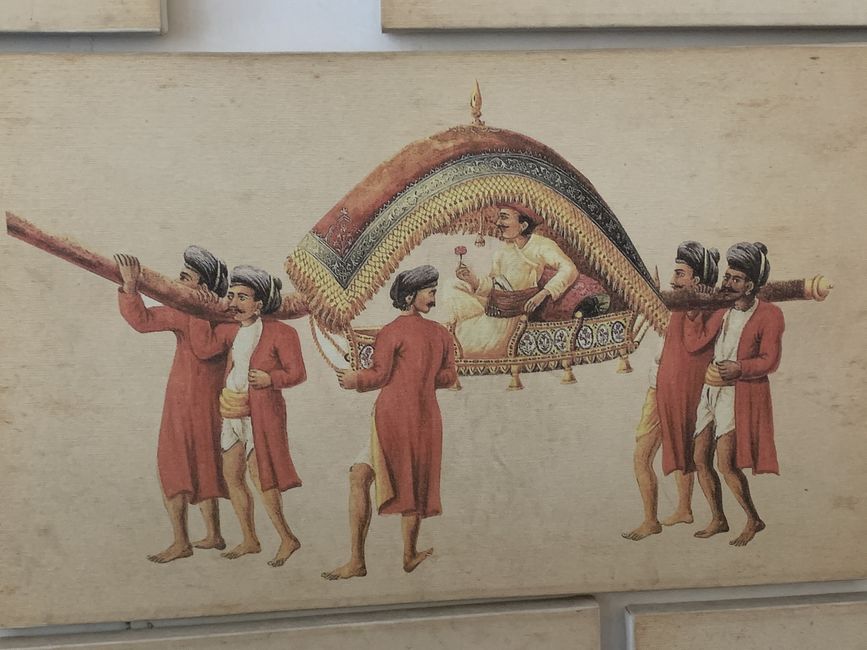
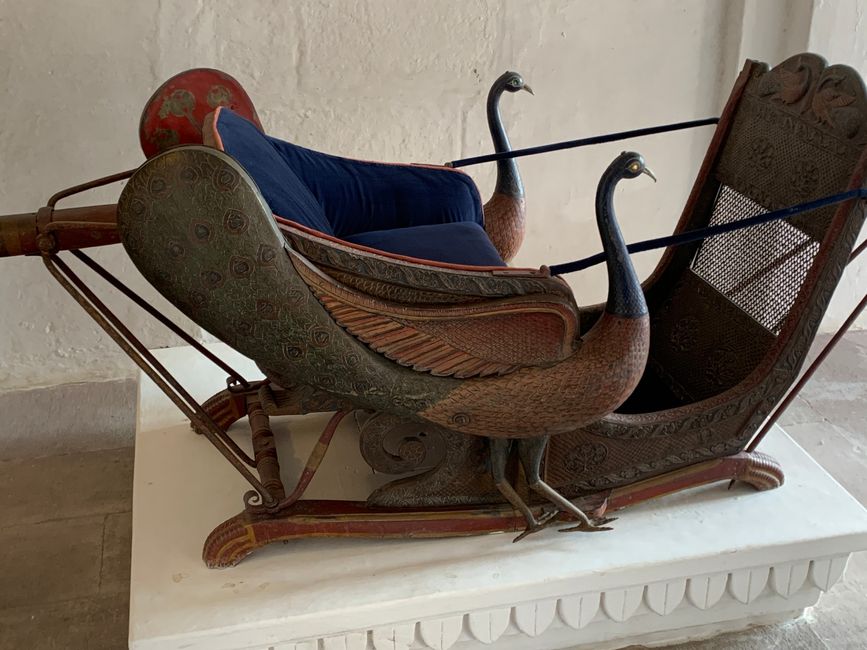
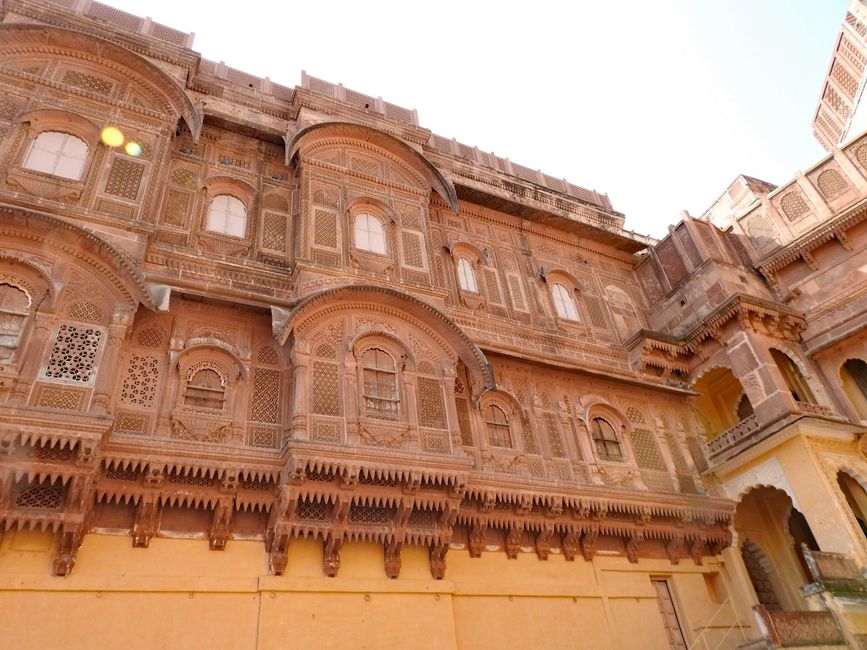
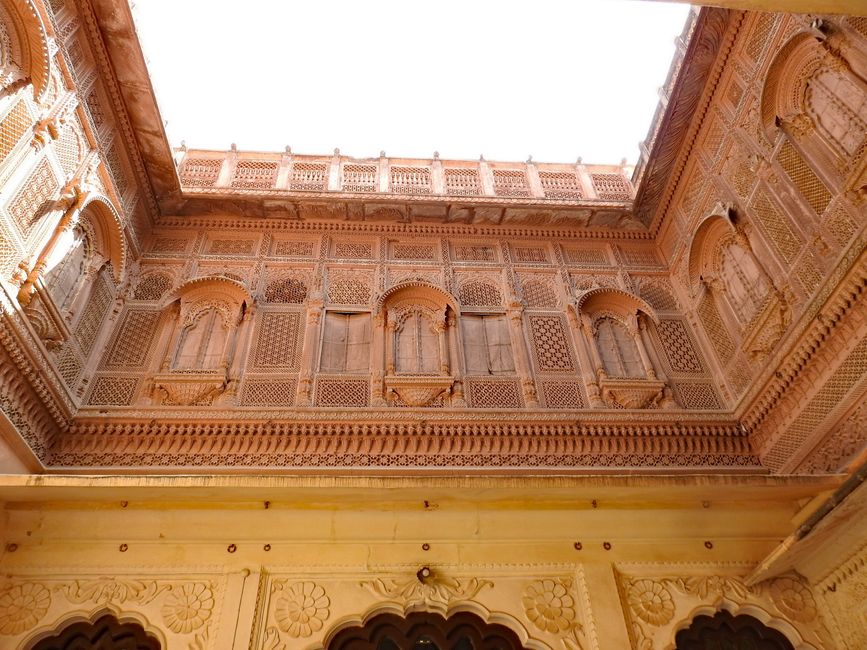
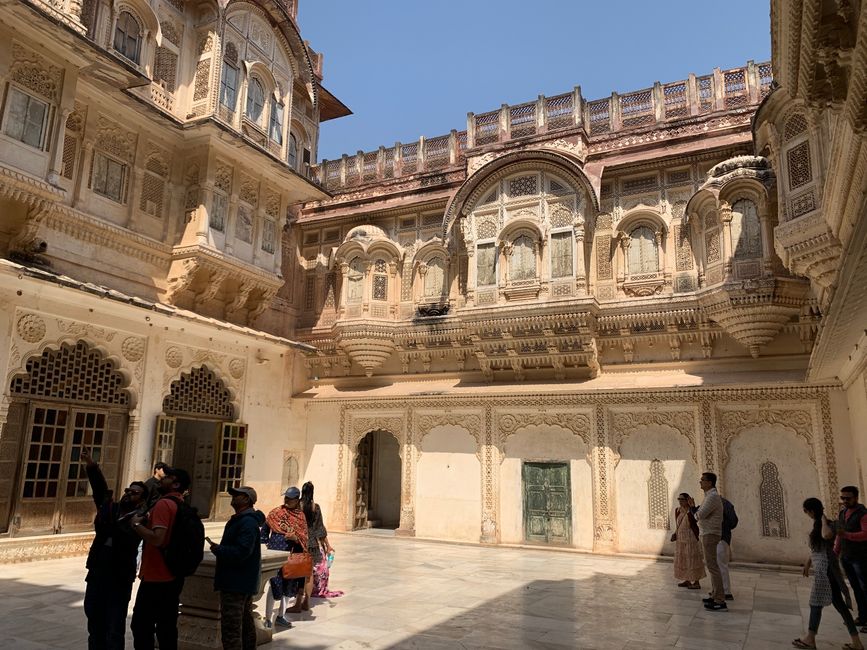
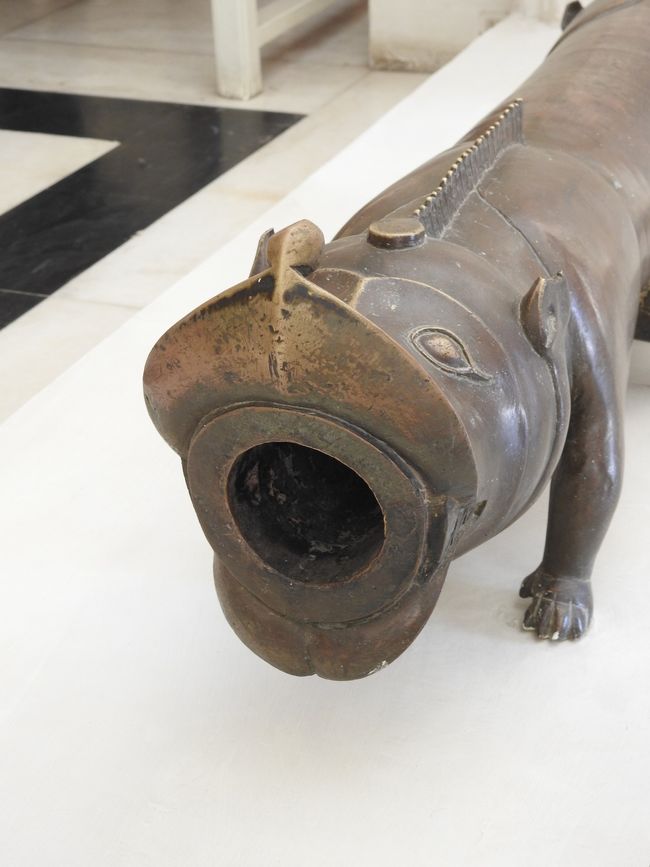
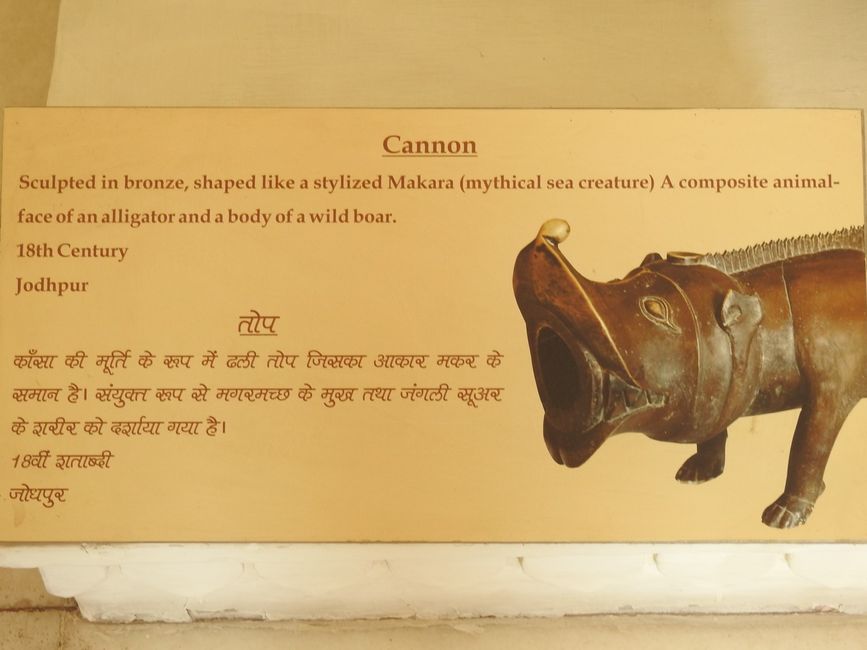
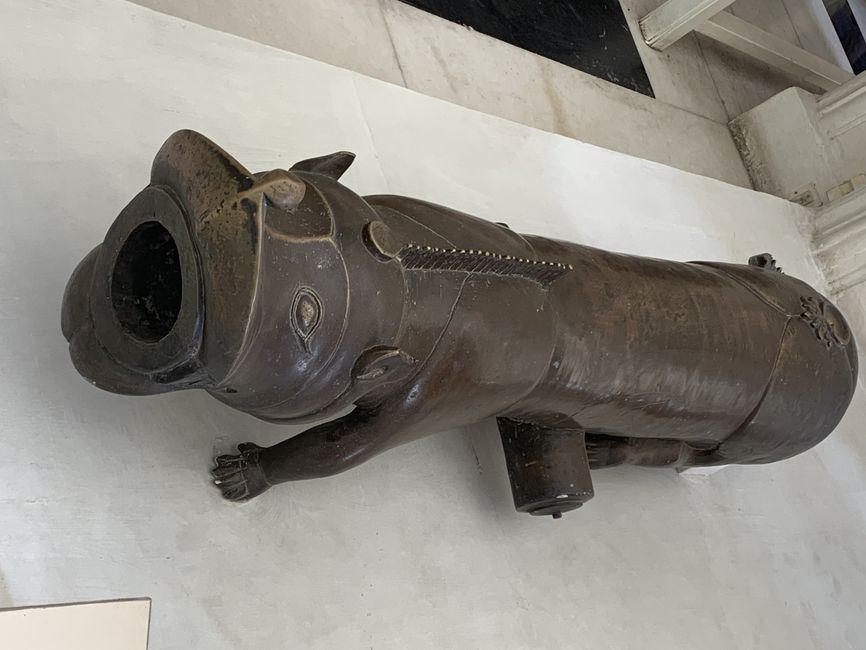
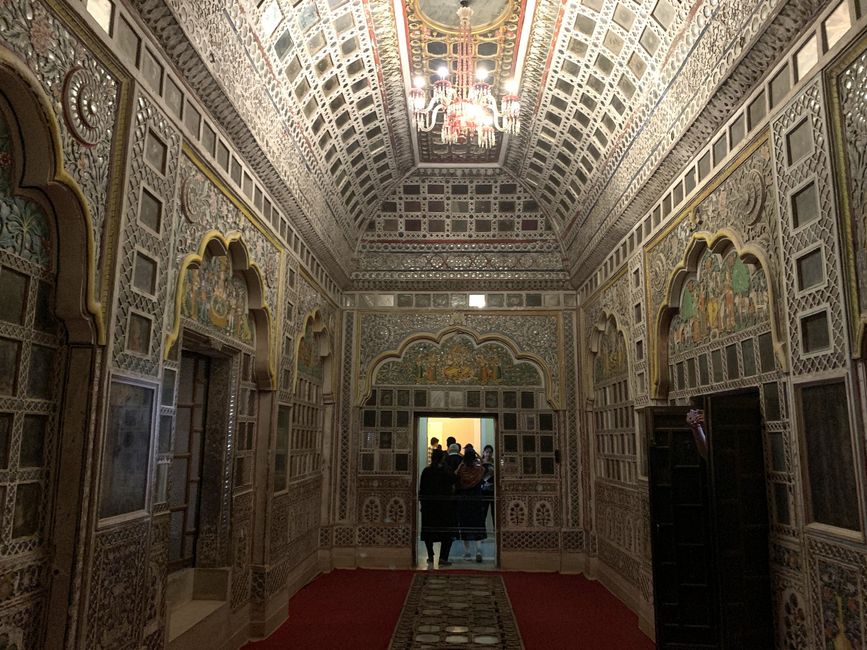
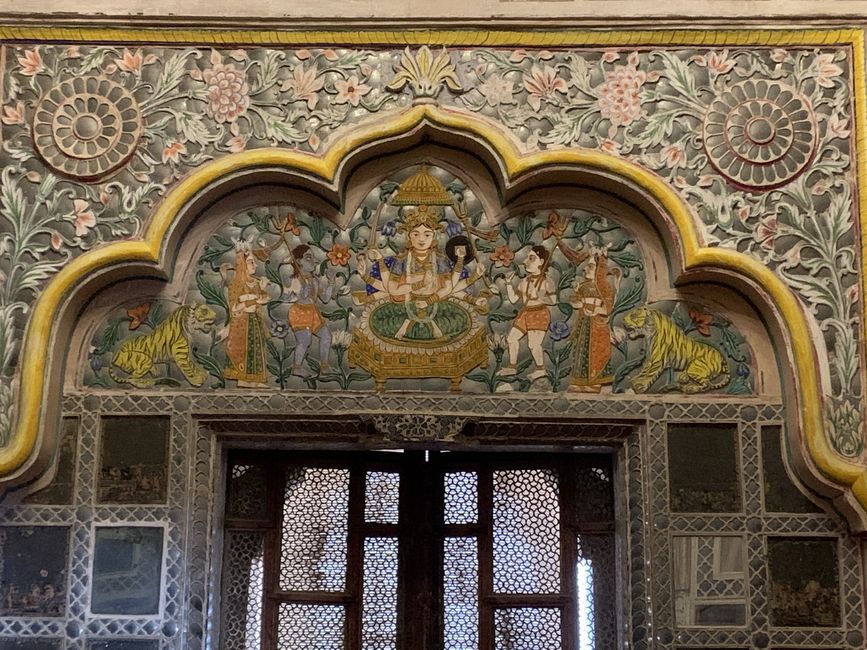
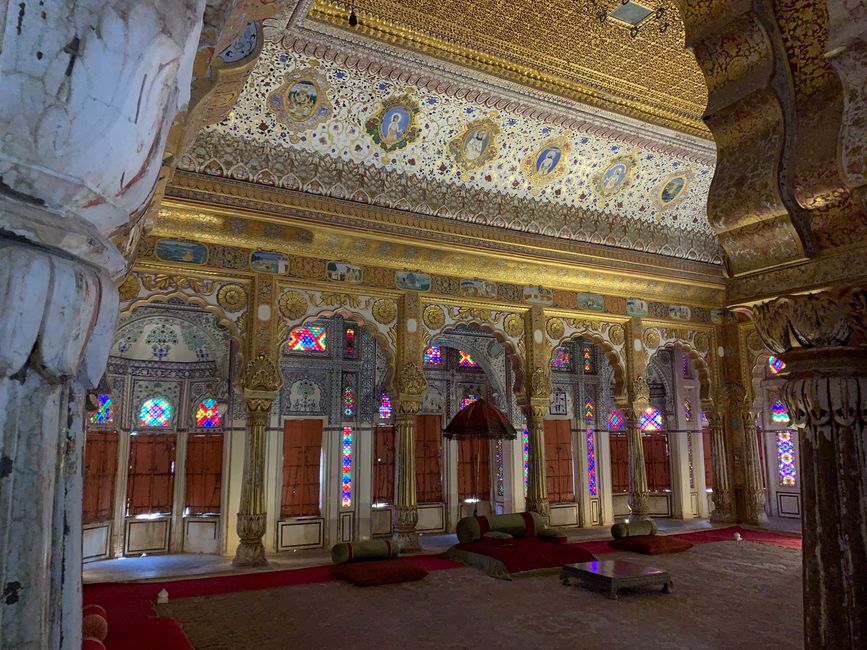
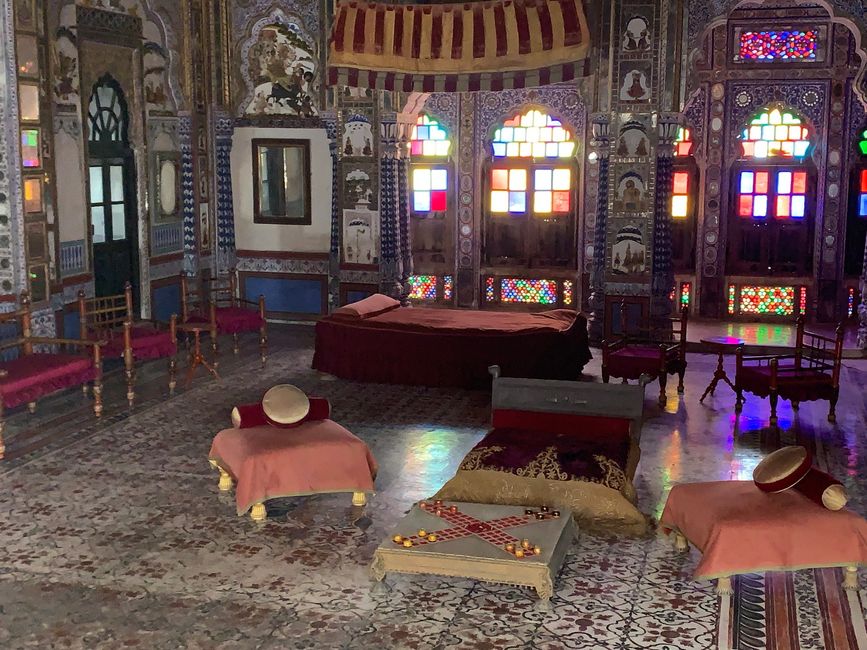
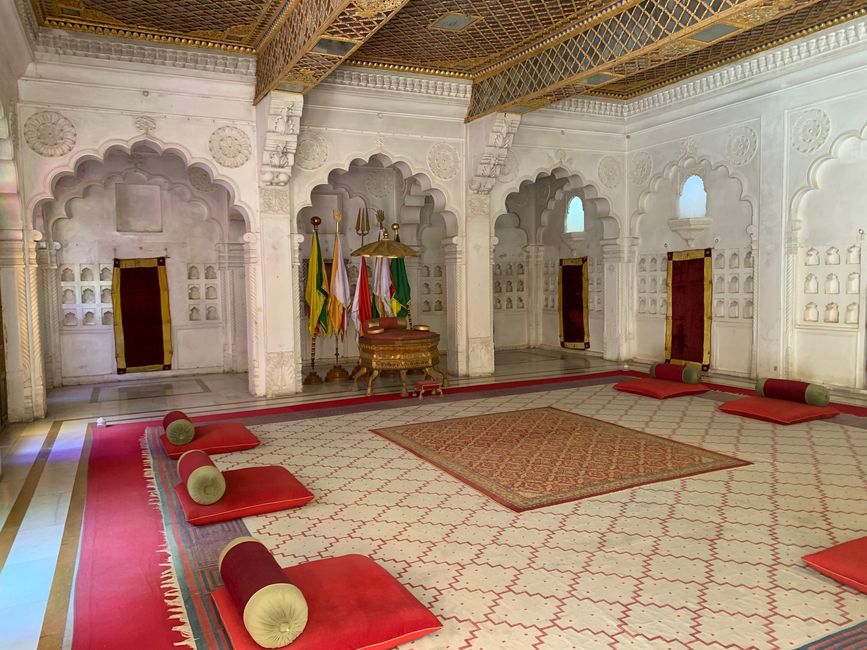
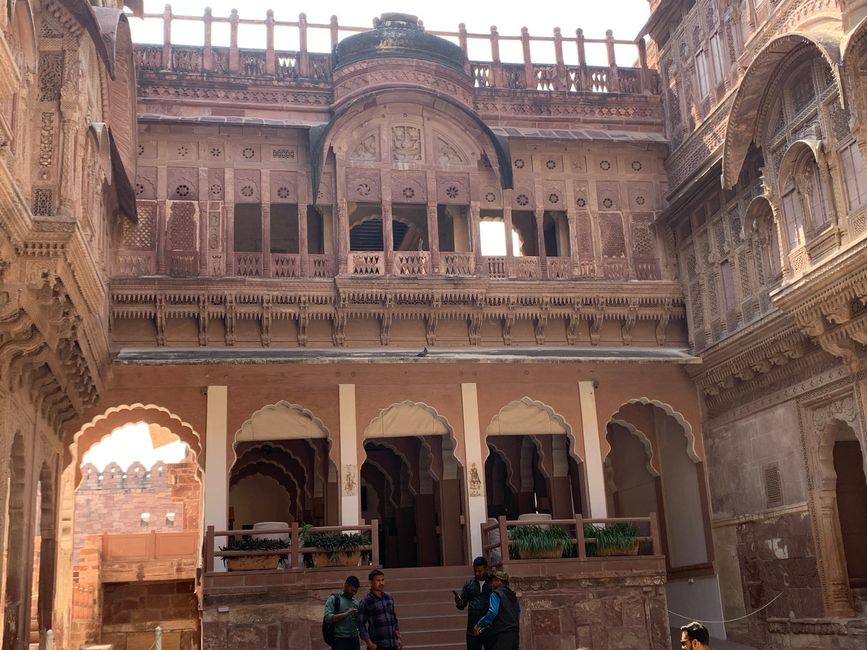
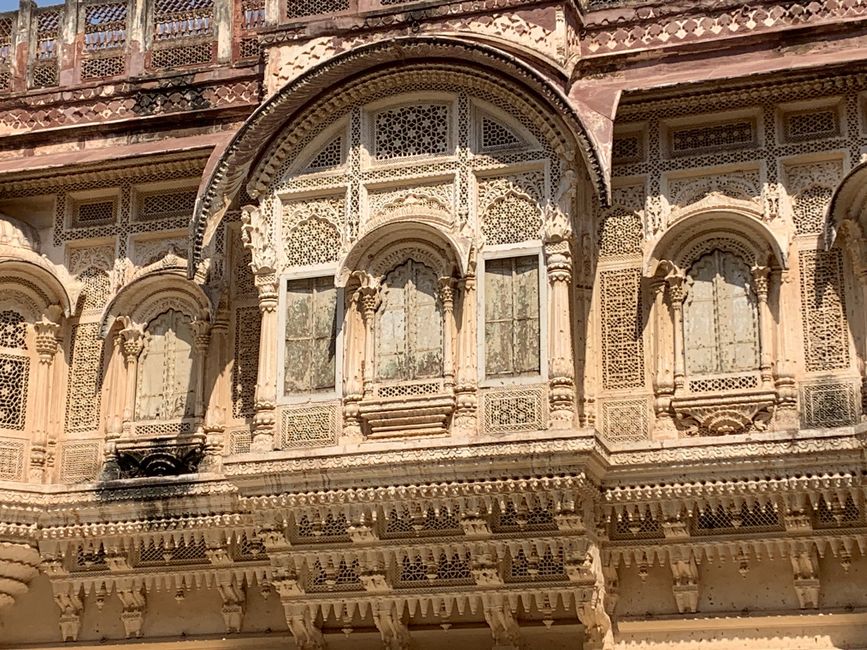
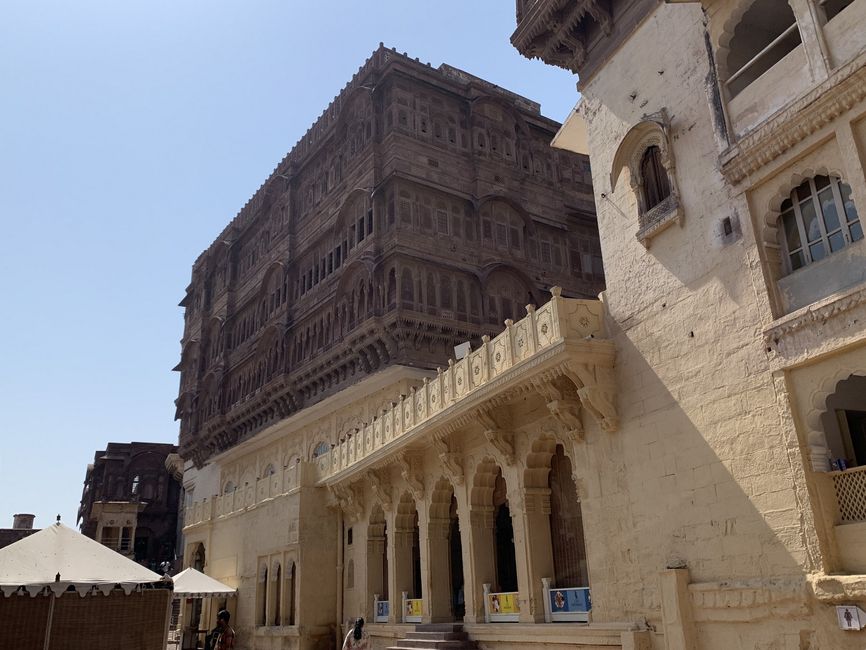

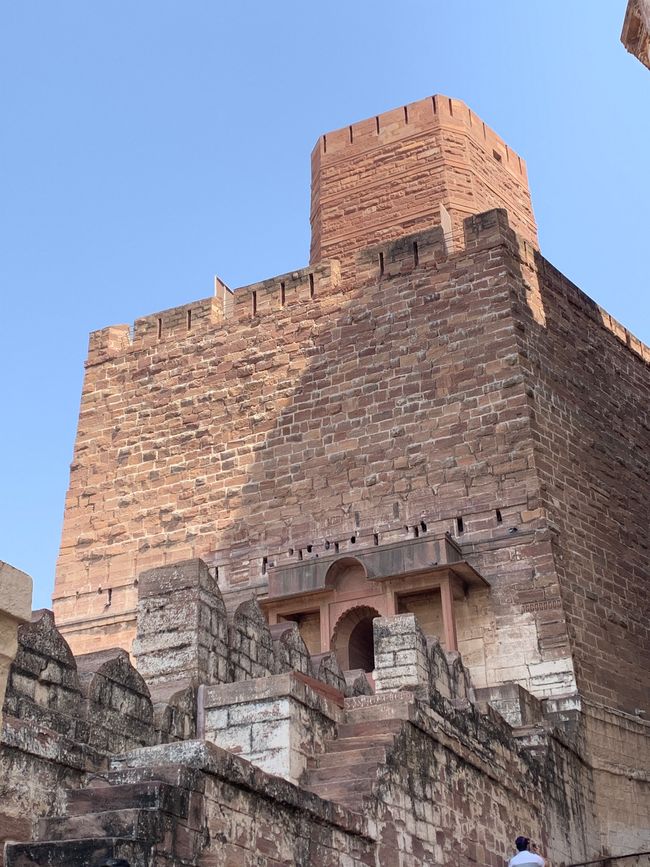
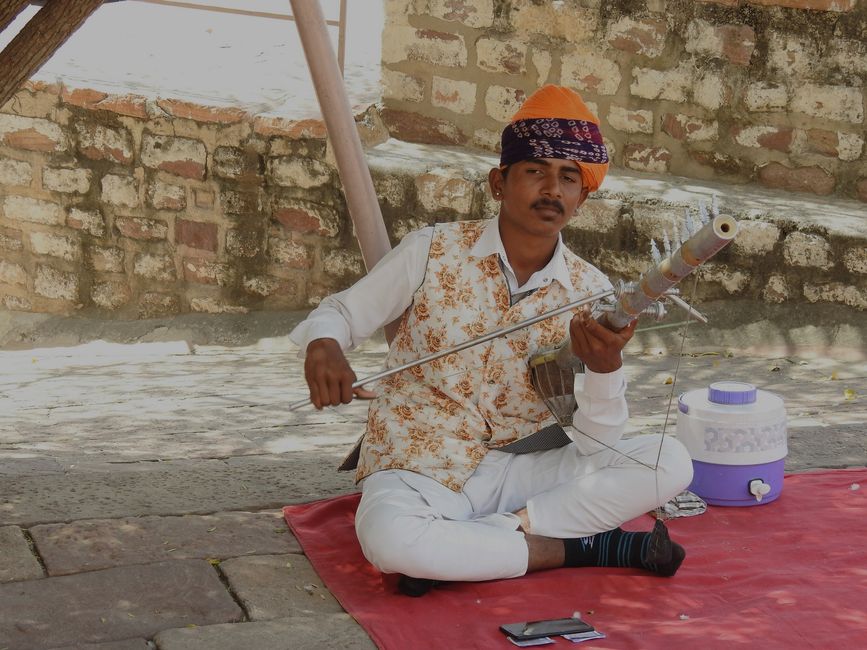
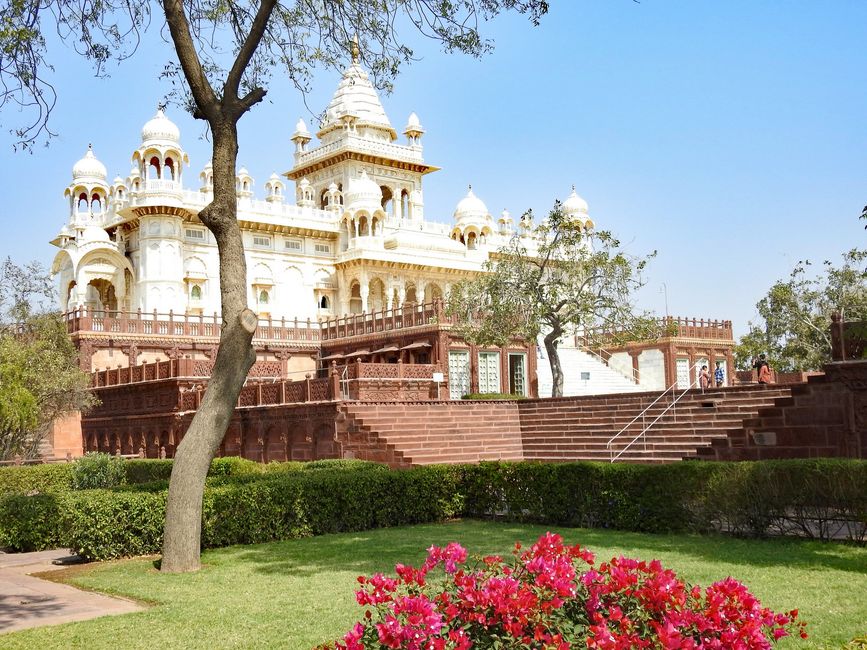
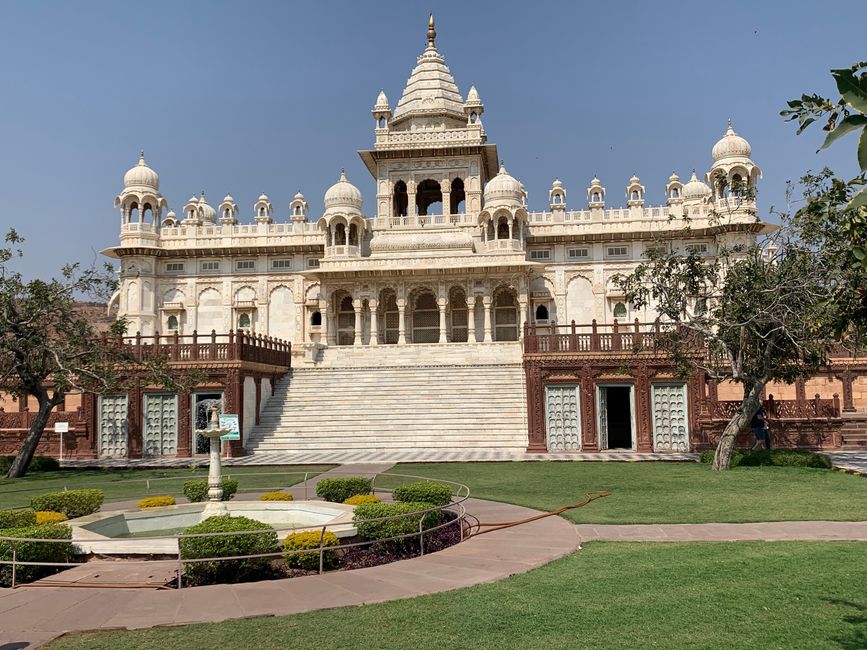
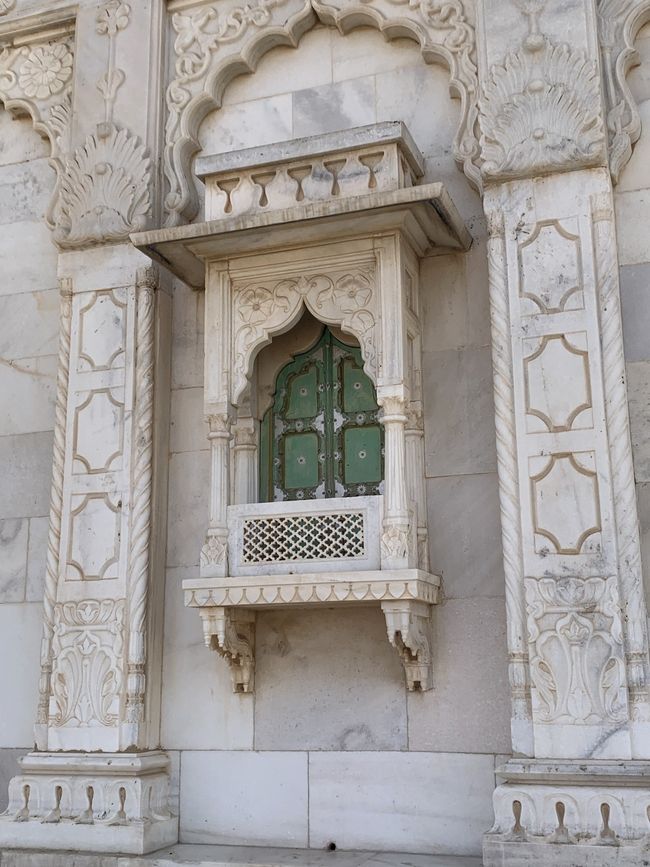

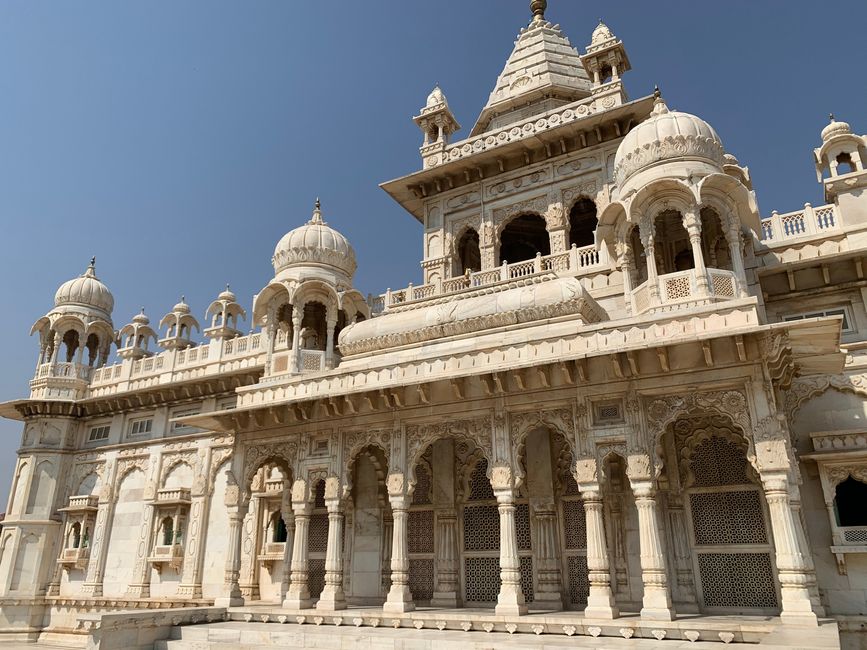
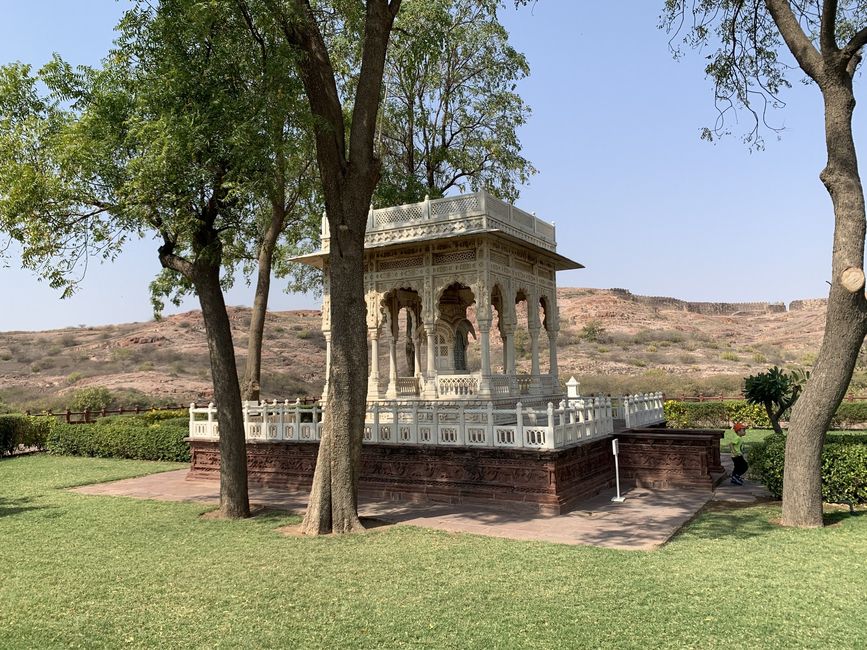
Just arriving at our hotel – the Umaid Bhawan Palace is a highlight. We are welcomed with jagged Indian music (from the tape), a wreath of flowers and a canopy. The hotel is part of the private palace that was built by the Maharajah family in the first half of the 20th century, allegedly primarily to provide employment for the population that had been impoverished and starving due to years of drought. Today it is still the residence of the former Maharajas.
Breakfast with acoustic accompaniment from a flute player and the “melodious” hooting of peacocks is also an experience. The view across the garden to the fortress is spectacular.
Located about 5 km from Jodhpur city, Mehrangarh Fort was built around 1459 by Rao Jodha. It is one of the largest forts in India. It stands guard over the city below, overlooking the rugged and rocky terrain, and houses a palace elaborately decorated with long carved panels and latticed windows exquisitely crafted from red sandstone. Moti Mahal (Pearl Palace), Phool Mahal (Flower Palace), Sheesh Mahal (Mirror Palace), Sileh Khana and Daulat Khana with magnificent halls and a rich collection of palanquins and howdahs (elephant saddles) and much more within the fort are magical. The display of cannons on the city walls near the Chamunda Temple is among the rarest in India.
On a nearby hill, we visit the Jasawant Thada – Popularly known as the “Taj Mahal of Marwar”, it is a graceful marble cenotaph next to the Mehrangarh Fort. Built by Maharaja Sardar Singh in loving memory of his father Maharaja Jaswant Singh II in the late 19th century, it also serves as a cremation ground for the royal family of Marwar. The main monument is built like a temple made of artistically worked marble.
-------------------------------------------------- --------------------------------
Just the arrival at our hotel – the Umaid Bhawan Palace is already a highlight. We are welcomed with jagged Indian music (from the tape), a wreath of flowers and a canopy. The hotel is part of the private palace that was built by the Maharajah family in the first half of the 20th century, apparently primarily to provide work for the population that had been impoverished and starving due to years of drought. Today it is still the residence of the former Maharajas.
Breakfast with acoustic accompaniment from a flute player and the “melodious” hooting of peacocks is also an experience. The view across the garden to the fortress is spectacular.
Located about 5 km from Jodhpur city, Mehrangarh Fort was built around 1459 by Rao Jodha. It is one of the largest forts in India. It stands guard over the city below, overlooking the rugged and rocky terrain, and houses a palace elaborately decorated with long carved panels and latticed windows exquisitely crafted from red sandstone. Moti Mahal (Pearl Palace), Phool Mahal (Flower Palace), Sheesh Mahal (Mirror Palace), Sileh Khana and Daulat Khana with magnificent halls and a rich collection of palanquins and howdahs (elephant saddles) and much more within the fort are magical. The display of cannons on the city walls near the Chamunda Temple is among the rarest in India.
On a nearby hill, we visit the Jasawant Thada – Popularly known as the “Taj Mahal of Marwar”, it is a graceful marble cenotaph next to the Mehrangarh Fort. Built by Maharaja Sardar Singh in loving memory of his father Maharaja Jaswant Singh II in the late 19th century, it also serves as a cremation ground for the royal family of Marwar. The main monument is built like a temple made of artistically worked marble.
Jibu

Ripoti za usafiri India
